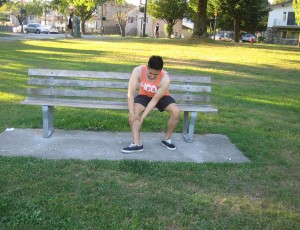Blisters are quite common for those who regularly engage in sports. Many athletes simply accept them as part of the game but there are measures to consider on avoiding them or reducing the pain and risk for infection in case one develops.
Causes of blisters
Blisters usually form due to friction applied on the skin. This can occur from rubbing on clothing or sports equipment on the upper layer of the skin. After some time, prolonged friction can cause the top layer to separate from the second skin layer.
A warning indication that a blister is about to develop is warmth and redness on the skin which is called a “hot spot”. This is followed by fluid that fills the space in between the 2 upper skin layers to provide protection from the continued rubbing. Once this occurs, a blister that appears similar to a small-sized bubble appears on the area.

In most cases, blisters develop on the soles of the feet, heels and palms of the hands since they brush against socks, shoes or equipment. Remember that the presence of friction particularly in humid, warm environments is ideal for the development of blisters.
Prevention of blisters
The ideal way to prevent blisters is to reduce friction applied on the skin. This can be done by wearing proper footwear that properly fits. At the present, you can find moisture-wicking socks that are made of synthetic materials that minimize the friction and moistness of the feet.
Some individuals apply tape on the toes or heels since these are predisposed to to blisters before a running event to prevent blisters from forming. Even though band aids or other types of tape can be used, many athletes utilize a small strip of duct tape over these spots. Take note that duct tape remains in place for longer runs and the glossy portion is smooth enough to glide on socks and other skin. Another alternative is to dab on petroleum jelly or talcum powder prior to exercise to minimize the friction.
If an individual is susceptible to blisters, it is vital to have a supply of prevention and treatment products for blisters on hand at all times. You can keep a store a collection of blister aids in your pocket or back pack so that they can be readily used once a blister starts to develop.
Once there are any “hot spots” during activity, it is vital to apply something right away to prevent them from developing. Always keep the feet dry or change socks if possible. If the individual could not stop the activity or change socks, shoes or gloves, it is best to apply a blister product on the sensitive areas. Simply amount a generous amount of petroleum jelly to minimize the friction in the area and you might need to reapply often.
